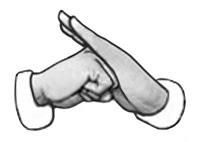Why We Bow
By De Anna Beasley
One of the things I love about being part of a traditional martial arts gwan is learning about the history behind the things we do. Many students have asked questions regarding the significance of bowing in class. The practice is rather unfamiliar in our Western culture but it’s as common as a hand shake in some Eastern cultures. In China, people bow to each other as a way of greeting and a show of respect. When we begin class by simply bending at the waist and lowering the eyes, it is to show respect to those who have devoted their lives to passing down the art we practice. We bow three times to those who are deceased (Guan Gong and Great Grandmaster Chang) and once to those who are still alive (Master Eric Sbarge).
The more elaborate courtesy bow has roots in traditional Chinese martial training. Sifu always reminds us that Tai Chi was first and foremost a fighting art (kung fu). Historically, martial techniques were considered military secrets. In everyday life, one kept their martial training a secret except among their brothers and sisters of the gwan. Therefore, when we bring our right fist to the right side of the body, then cover the fist with the open palm of our left hand (pocket position), we are symbolically ‘hiding the art.’ When we move the fist from pocket position to chest height while shifting the left palm behind it, we are bringing the art out in the open amongst our brothers and sisters. Lowering one’s head so you are not making eye contact with Sifu or a senior student is a show of respect, humility and trust.
Other explanations for the courtesy bow have roots in Chinese folklore and Confucian philosophy. In ancient China, the five fingers of the closed right hand represented the five major lakes in ancient China while the four fingers of the open left hand represented the four seas (East, West, South, North). The hand and fist together symbolized unity and was the greeting wandering martial artists gave each other during their travels.
According to Confucian ideals, a true gentleman was the master of both martial arts, symbolized by the closed right fist, and scholarly pursuits, represented by the open left hand. Together, the bow represented that while the individual was capable of using martial arts, it is restrained by higher ideals of respect and courtesy for others.
 There are other times in class when you will see someone bow. Whenever you receive a correction from Sifu or a senior student, it is appropriate to bow. Typically, covering your right fist with your left hand while bowing your head is enough under these circumstances. Also, whenever you do partner work, it is considered polite to bow before and after the exercise.
There are other times in class when you will see someone bow. Whenever you receive a correction from Sifu or a senior student, it is appropriate to bow. Typically, covering your right fist with your left hand while bowing your head is enough under these circumstances. Also, whenever you do partner work, it is considered polite to bow before and after the exercise.
Without respect, humility and trust, the art we know today would not have survived. The courtesy bow is a reminder to always be mindful of the wellbeing of our teachers and fellow students while we train and interact with each other. This practice ensures that the art remains intact so that it may be passed down to future generations.
For a more detailed explanation of the origins of the courtesy bow, click here.
Image is from UTS Kung Fu Club

